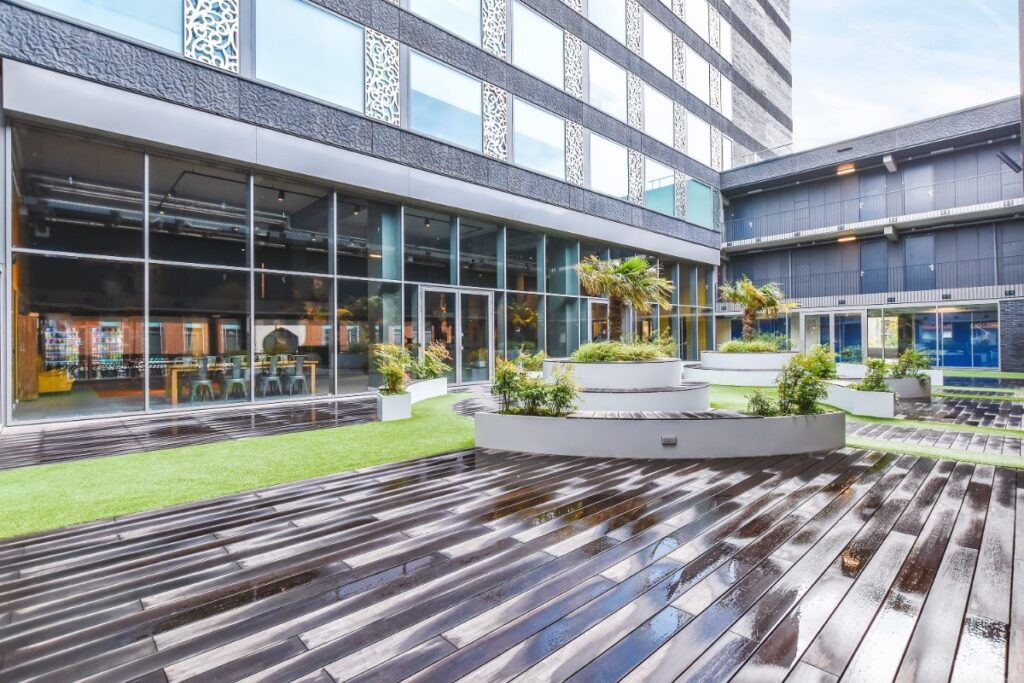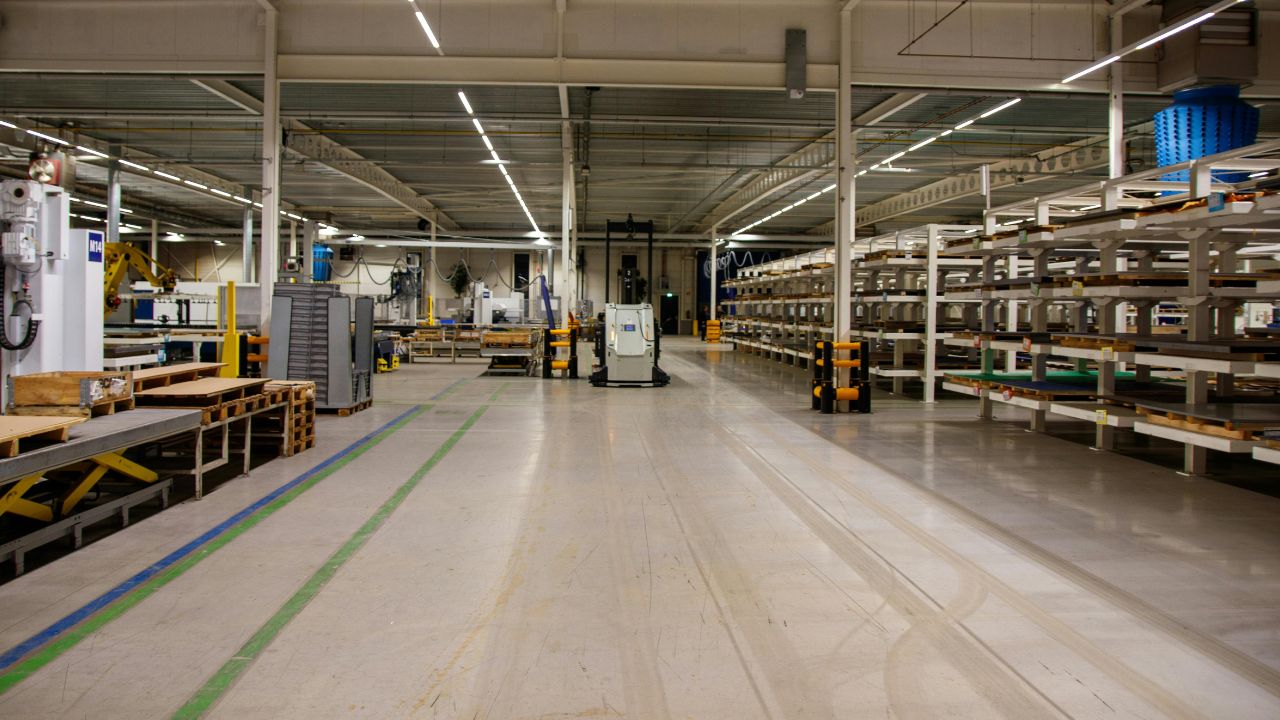Create Iconic Outdoor Spaces with Expert Landscaping
Outdoor spaces have a remarkable ability to shape how people interact, relax, and experience a property. For commercial properties, these areas are more than just decorative—they reflect professionalism, enhance curb appeal, and provide functional environments for employees and visitors alike. Thoughtfully designed outdoor spaces can transform ordinary properties into iconic destinations, seamlessly blending beauty, usability, and sustainability.
Professional landscaping combines creative vision with technical expertise, turning these aspirations into reality. From lush greenery to elegant hardscaping, every element of an outdoor design can work together to create a harmonious, inviting atmosphere that elevates the entire property.
Envisioning the Perfect Outdoor Space
Every great outdoor space begins with a purpose. Whether it’s a serene courtyard for employees, a lively entrance to impress clients, or an open area for community engagement, understanding the space’s function drives every design decision. For commercial properties, aligning the design with the organization’s values and goals ensures the space delivers maximum impact.
The Planning Process:
Defining Goals: Clarifying the intended use of the space—whether for relaxation, meetings, or events—provides the foundation for the design.
– Site Analysis: Topography, sunlight patterns, and existing vegetation are assessed to identify opportunities and challenges.
– Incorporating Features: Strategic placement of walkways, seating areas, and plants ensures both form and function are prioritized.
A collaborative approach between property owners and landscaping professionals ensures the final design reflects the unique character of the property while meeting its practical needs.
Plants as the Foundation for Beauty and Function
Plants are the heart of any outdoor space, providing structure, color, and life. Their role goes beyond aesthetics—strategically selected plants can enhance privacy, improve air quality, and create shade.
Key Considerations for Plant Selection:
Native Plants: Plants adapted to the local climate require less maintenance, water, and artificial fertilizers, making them an eco-friendly choice.
– Seasonal Interest: Incorporating plants with varying bloom times ensures the landscape remains dynamic and visually engaging throughout the year.
– Practicality: Tall shrubs and trees can provide natural boundaries and shade, while low-growing plants soften pathways and guide the eye through the space.
Choosing the right mix of plants ensures that the landscape thrives with minimal intervention, creating a sustainable and visually appealing environment.
Defining Spaces with Hardscaping
While plants provide beauty and texture, hardscaping elements like patios, pathways, and retaining walls give outdoor spaces their structure. These features shape how people move through and interact with the environment, ensuring functionality and accessibility.
Hardscaping Elements to Consider:
– Patios: Ideal for dining, meetings, or casual relaxation, patios offer versatile spaces for gathering.
– Walkways: Pathways protect delicate planting beds and guide visitors to key areas, combining practicality with design.
– Retaining Walls: These features help manage elevation changes and prevent erosion, all while adding dimension to sloped properties.
– Water Features: Fountains, ponds, or cascading streams introduce movement and soothing sounds, enhancing the sensory experience.
Material selection plays a crucial role in hardscaping. Options like natural stone, stamped concrete, and composite decking add character while standing up to heavy use.
The Role of Lighting in Enhancing Outdoor Spaces
Lighting is essential for extending the usability of outdoor spaces into the evening while creating a welcoming atmosphere. Beyond safety, well-designed lighting highlights key features of the landscape and establishes mood.
Lighting Techniques for Maximum Impact:
– Uplighting: Emphasizes architectural features or tall trees, creating depth and drama.
– Downlighting: Mimics natural light, enhancing pathways and garden beds.
– Accent Lighting: Adds focus to water features, sculptures, or unique planting arrangements.
Energy-efficient solutions, such as LED fixtures and solar-powered lights, offer cost-effective and environmentally friendly options. Smart lighting systems, with customizable timers and dimmers, provide flexibility for different occasions and needs.
Balancing Privacy and Open Space
For outdoor spaces to truly shine, they must balance openness with seclusion. Open areas encourage activities like events or sports, while private nooks provide quiet retreats for relaxation or focused conversations.
Achieving Balance with Landscaping:
– Natural Screens: Tall shrubs, hedges, or climbing plants create privacy without feeling intrusive.
– Vertical Gardens: In urban settings, trellises and vertical gardens soften the appearance of walls and fences.
– Flexible Layouts: Spaces can be designed to serve multiple purposes, such as combining open lawns with shaded seating areas.
Striking this balance ensures the space is versatile and comfortable for all users.
Designing for All Seasons
A truly iconic outdoor space offers visual interest and functionality throughout the year. By incorporating features that adapt to seasonal changes, property owners can enjoy their landscapes regardless of weather conditions.
Seasonal Landscaping Strategies:
– Deciduous Trees: Provide shade in summer and vibrant foliage in fall, while allowing sunlight through bare branches in winter.
– Evergreens: Maintain structure and greenery during colder months.
– Seasonal Accessories: Weather-resistant furniture, portable heaters, and shade structures ensure comfort in varying conditions.
Planning for seasonal variations allows outdoor spaces to remain inviting and enjoyable year-round.
Sustainability in Landscaping
Sustainability is an increasingly important aspect of modern landscaping, especially for commercial properties that prioritize environmental responsibility.
Sustainable Practices in Outdoor Design:
– Native Plants: Minimize water and fertilizer needs, reducing environmental impact.
– Stormwater Management: Rain gardens, permeable pavers, and retention basins manage runoff effectively.
– Smart Irrigation: Drip systems and weather-responsive controllers optimize water use, ensuring plant health while reducing waste.
– Eco-Friendly Materials: Recycled or reclaimed materials add character while supporting sustainability goals.
By integrating these practices, landscaping professionals create spaces that are as eco-friendly as they are beautiful.
Custom Features for Unforgettable Spaces
Custom features add personality and functionality to outdoor spaces, making them truly unique. For commercial properties, these elements can reflect the brand’s identity while enhancing usability.

Examples of Custom Features:
– Fire Pits: Serve as gathering spots for social interaction.
– Outdoor Kitchens: Expand the possibilities for hosting and entertaining.
– Sculptural Seating: Adds a creative touch while providing practical seating options.
– Water Features: Ponds or fountains attract wildlife and create a calming atmosphere.
Even small details, like distinctive paving patterns or themed planting arrangements, leave a lasting impression.
Maintenance: The Key to Longevity
A well-maintained landscape is essential for preserving its beauty and functionality over time. Design choices that prioritize durability and accessibility make upkeep more manageable, while professional maintenance services ensure every detail is addressed.
Key Maintenance Practices:
– Seasonal pruning, fertilization, and pest control.
– Regular inspections of hardscaping and lighting systems.
– Soil enrichment and irrigation adjustments to support plant health.
Engaging professionals for maintenance not only saves time but also ensures the space remains in peak condition.
Simplifying Landscaping for Facility Managers
For facility managers, maintaining a clean, functional, and visually appealing outdoor space can be a daunting task. From juggling multiple vendors to coordinating maintenance schedules, the demands of landscaping can quickly add to an already full plate.
Partnering with expert landscapers makes all the difference. By combining creative design, advanced techniques, and efficient project management, landscaping professionals simplify the process, allowing facility managers to focus on other priorities.
Professional landscaping also reduces the risks of errors and costly repairs, ensuring that every element of the space is built to last. With regular maintenance and proactive care, facility managers can rest assured that their outdoor spaces will remain pristine and stress-free.
This is where National Facility Contractors (NFC) excels. By offering tailored landscaping solutions, NFC takes the hassle out of outdoor space management. From innovative designs to reliable maintenance, NFC handles every detail with precision, making facility managers’ jobs easier and their properties shine.
Conclusion: Trust NFC for Iconic Outdoor Spaces
An expertly designed and maintained outdoor space is more than just an investment in property—it’s an investment in experience, functionality, and long-lasting impressions. With National Facility Contractors, you gain a trusted partner committed to delivering stress-free landscaping solutions that enhance your property’s appeal and value.
Contact NFC today to transform your outdoor spaces into iconic destinations that reflect the very best of your property.






